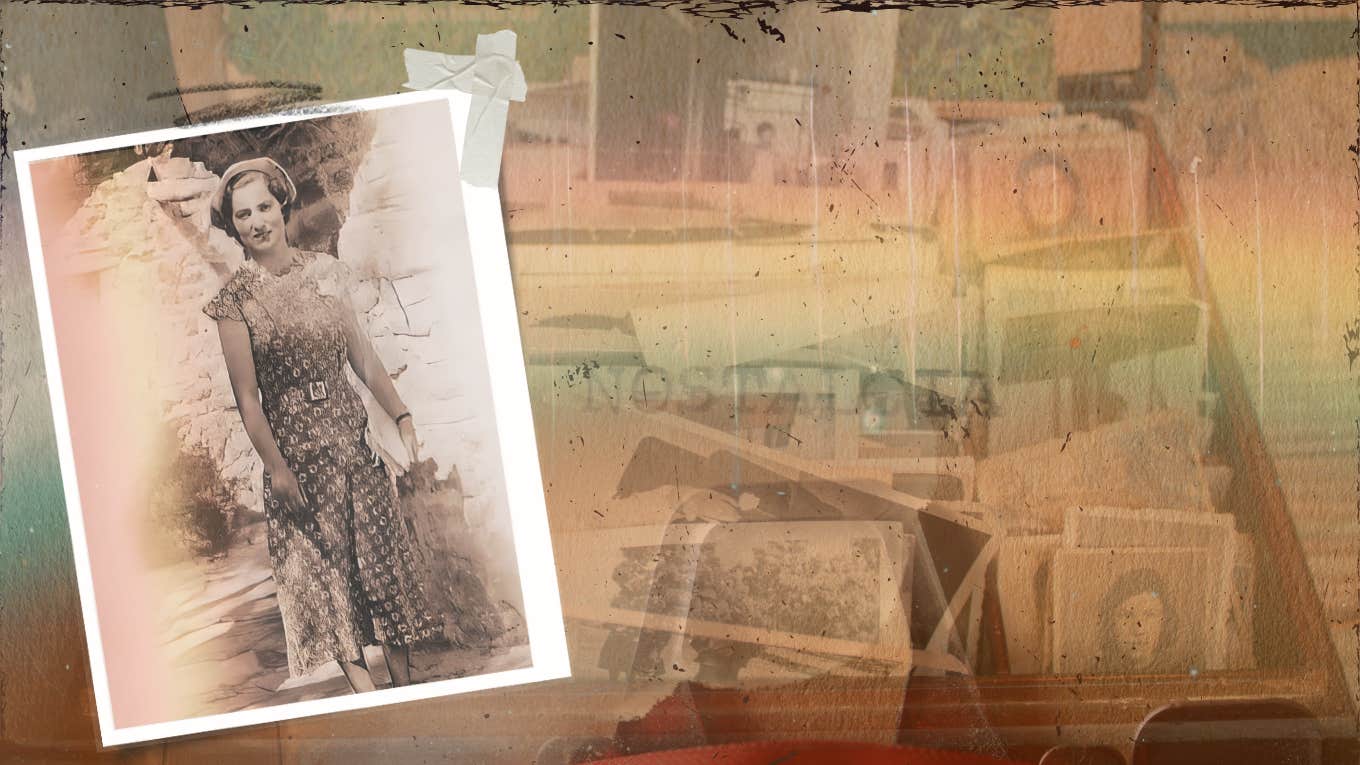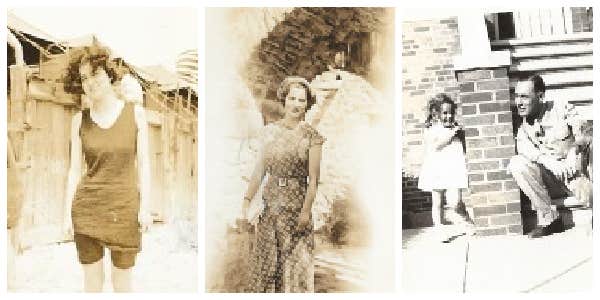How To Heal Your Family Through 3 Key Connection Points
Tactics designed to help your family thrive, however you define and experience a sense of family.
 pedrosala, Miray Bostancı | Canva, Courtesy of Author
pedrosala, Miray Bostancı | Canva, Courtesy of Author Within my small family, I tend to devote time and attention to people who are healthy mutual matches. Some connect through bloodlines, some by marriage. I have expanded that family with deep, sustained friendships over decades; we call ourselves family by choice. I’m also grateful for a range of meaningful relationships, long-term as well as newer connections.
You may not have this luxury of only a few obligatory functions and obligations to free yourself from meaningful relationships beyond conventional ones. Yet I hope you’ll benefit from any inspiration and useful questions here as you play with photos, music, and humor relating to your situation.
They are designed to help your family thrive, however you define and experience it. They are also applicable to other worthwhile relationships you’d like to develop further. But first, a short story so you can see how one process using photos opens insights for action. It is also one inspiration for this article.
Here's how to heal your family through 3 key connection points.
Where photographs may lead you.
One of my closest cousins is Ellen. Though I am old enough to be her mother, we have been developing a warm, open relationship over many years. We share thoughts, ideas, feelings, and information, keeping current about our lives even though she’s in Florida and I am in Washington, DC.
Since Ellen is an aspiring genealogist, in addition to many other skills, for a recent visit we decided to focus on a carton of files of family photos I had organized and tucked away after my mother’s death long ago. The images called up past adventures, associations, and stories. Oh my: divorces, scandals, edgy relationships, elopements, alcoholism, mental issues as well as mostly ordinary family dynamics. Most were just your typical family follies.
In the midst of this storytelling about my family and her side, we made progress scanning and annotating about one-third of them, thanks to Ellen’s tech savvy. For me, the experience was laden with poignant memories of situations, issues, and behaviors I remembered from family commentary and my observations at various ages.
The photos went back as far as 1901, identified thanks to my mother’s dating and naming of the people in many of the older photos. Given the limited resources of the family at that time, I was surprised by the number of professional ones.
I soon appreciated that many of the others were probably taken by my father, another talent of his I came to realize. Here are three: me flirting with my uncle, my mother at 16, the year before she eloped with my father because the family was against their marriage, and my mother in Mexico.
This review of the many folders made me feel even more grateful for our small threesome, relatively free of limiting tendencies. They affirmed my appreciation of my parent’s self-awareness, common sense, and intelligence. They were willing to keep learning, exploring, and developing new locations, creating career stretches, and traveling all over the world on modest means.
As you consider these three photos, what do you notice in the body language and dress? Even better, choose a few of your family photos for new impressions, insights, and information about yours.
- What do body language, proxemics, and facial expressions (posed or spontaneous) tell you?
- What relationships become more apparent?
- What are the implications of the clothing?
What feelings do family photos bring out?
I felt sad about remembered losses as well as moved and satisfied by this first photo review. It also reminded me of my vulnerabilities and how families weather the dramatic messes as well as the daily grinds. So, as I sometimes do, I wrote a poem to capture some of my emotions and experience, for catharsis and moving on. Perhaps you will find it useful for your explorations, family insights, and choices as well as concerns and questions to explore further.
Family knots
Families are complex mixes of joys, opportunities, and conflict,
Of unaddressed resentments misunderstandings, and unpleasant realities,
Full of repeated patterns of behavior that keep people static, often frustrated, and unrealized,
Perhaps adrift.
Fear of reaction and disruption postpones untying or at least loosening these knots
Which can offer one of the better ways to move to true intimacy,
Sadly thwarted by anxieties and calcified habits that rob time and energy
From the imagination, hope, courage and action
That will free everyone to reframe relationships for making a difference.
 Photos courtesy of the author
Photos courtesy of the author
Reset communication for a more authentic family connection.
I think effective, sincere processes of communication are key to improving situations and progress. That they are often automatic, reactive, and unthinking keeps much of their potential for individuals and families locked. If you are willing to risk some departures from what’s comfortable, consider and adapt the following for yourself first.
What do you want to say to a family member to open a door to more authentic, productive communication? This does not involve monologues or broaching something you sense or know would be challenging, insensitive, or a turn-off. Rather, start by exposing something about yourself, your concerns, or your feelings.
Here are examples of follow-up questions to use or adapt:
- I would like to hear what you think about _____ because _____.
- I have been feeling as though we have been missing opportunities to _____for a while. What is your impression?
- I sometimes think we tend to repeat the same patterns of reaction and connection when we talk. If you would modify one aspect of how we relate to one another to strengthen our relationship and enjoyment in being together, what would it be?
If you and other family members tend to communicate in short bursts of text, online cards, or other means created by others, consider alternatives to try fresh ways to communicate. They may include an open-ended telephone or in-person conversation, an original, heartfelt note, a letter of specific appreciation, a recording of a song you both like with your personalized lyrics, or a funny sketch or cartoon. To address complex issues, consider writing an actual letter, if only to prepare for a conversation and catharsis.
Any possibly playful departure from the typical routine would freshen the connection and provide an escape from the ordinary, predictable patterns that sustain stasis. By all means, express emotions and how you feel about something rather than hide out only in rational statements or positions.
Often, families connect in groups that make meaningful, one-on-one conversation unlikely. Alternatively, one occasion alone with my father was a delight. Departing from predictable chit-chat, I felt curious about his belief in reincarnation; he favored living the golden rule to organized religious “mumbo-jumbo,” which he felt separated people.
Exploring what I thought was a paradox in his beliefs, I asked him how he believed in reincarnation when he rejected so much of formal religion. He replied: “I can’t believe I learned all this for nothing,” with a typical twinkle in his eye.
Indeed, he was constantly exploring, learning, and applying a wide range of topics and processes without being arrogant. Usually a teacher, Pop used questions to encourage understanding rather than spouting knowledge.
For your voyages beyond cliches and routine habits of conversation, I think you’ll get useful ideas and approaches from David Brooks’ new book: How to Know a Person: The Art of Seeing Others Deeply and Being Deeply Seen.
Musical metaphors.
I felt refreshed listening to Jacob Collier speaking about how he makes his music. At a basic level, he reminded me that music involves melody, rhythm, and harmony.
To explore how these three aspects of music can serve as metaphors in your valued relationships, first start with yourself. Use or adapt them as a prelude to collaborating with others to explore how to encourage thriving for mutual benefit. How would you describe the types of rhythms and patterns (or lack of them) in your relationship with your family, individually and together?
If you would associate a particular melody or song with family rhythms or communication patterns, what would it be? What does your choice tell you?
Harmony: What does harmony mean to you? (In psychology, harmony refers to a positive state of inner peace, calmness, and balance, as well as the feeling of being tuned in.) What are the main two or three actions you will take to improve the harmony in one important relationship? To proceed, how would you prepare for and start related conversations or discussions in both comfortable and open ways?
Humor: It is “All in the Family,” to paraphrase Norman Lear’s TV shows.
The issues and relationships of everyday people in Lear’s shows remain relevant leads for observing and understanding your own family in serious and amusing ways. Whether obvious or not, the themes there as well as in your original and current family hold echoes, seeds, and imprints of who you are and what you do today.
Some of them are keepers, others haunt you in ways you’d want to ignore. Then, use those hints and guides to understand who you have become and how you act. Nestled in between are opportunities for evolving and goal setting to move toward who you want to be now and later.
- What conflicts would benefit from using sensitive humor and playfulness to open and sustain better communication?
- What family and individual strengths do you want to acknowledge to members? Give specific examples.
- What comedy film, TV show, or play would be interesting to watch together to stimulate an open conversation about family behavior choices and patterns?
For fun and additional insights, watch some reruns of Lear’s insightful, dynamic, and entertaining shows together with family members or alone. While enjoying and discussing them, you’ll see how and why family matters at many levels.
As you get an AHA! from whatever processes and practices you choose and adapt from this article, as well as what you integrate from your own experience and insights, may they all support continuous family thriving for everyone’s benefit.
Ruth Schimel Ph.D. is a career and life management consultant and author of the Choose Courage series on Amazon. She guides clients in accessing their strengths and making viable visions for current and future work and life situations. Benefit from the first chapter of her seventh book Happiness and Joy in Work: Preparing for Your Future available without charge.
